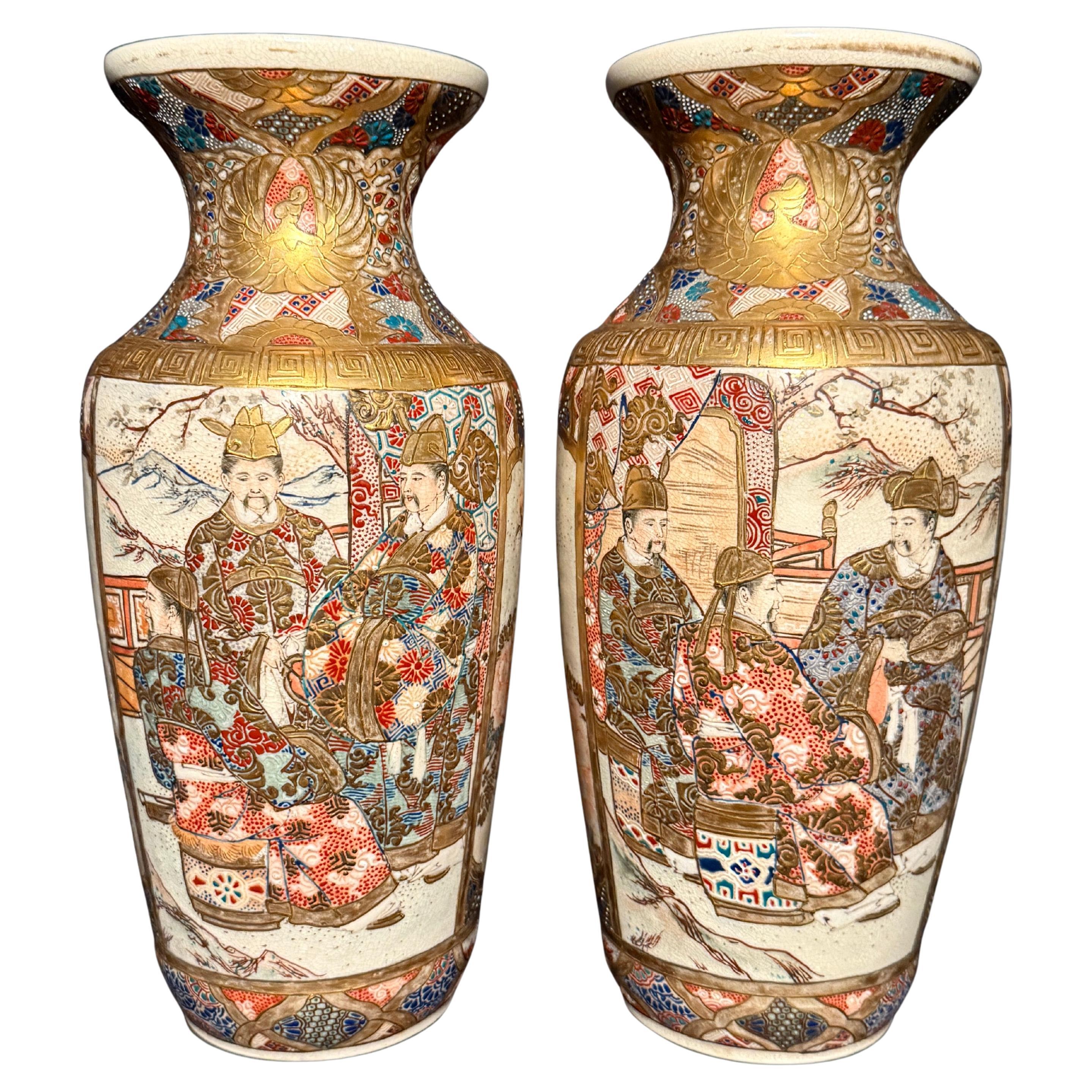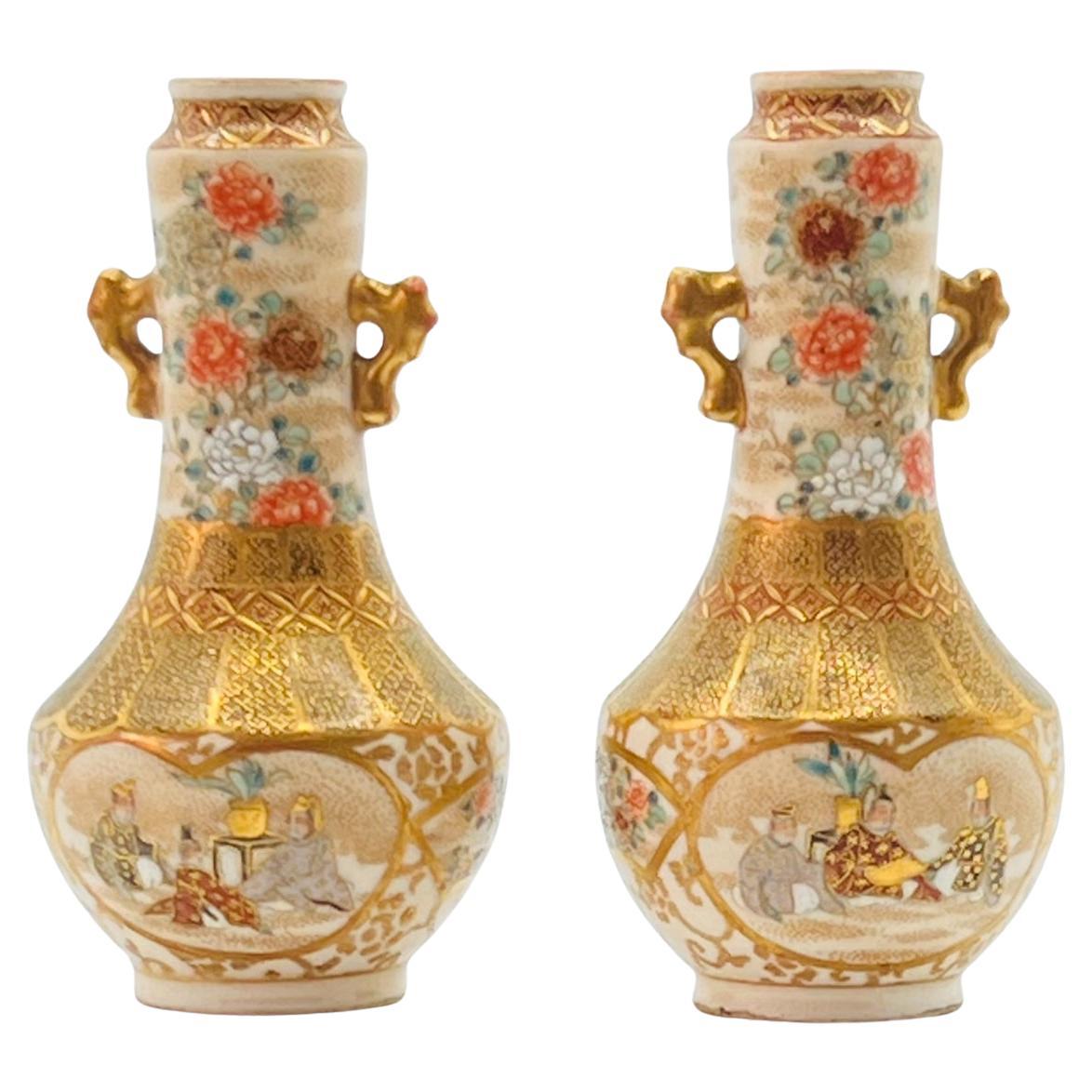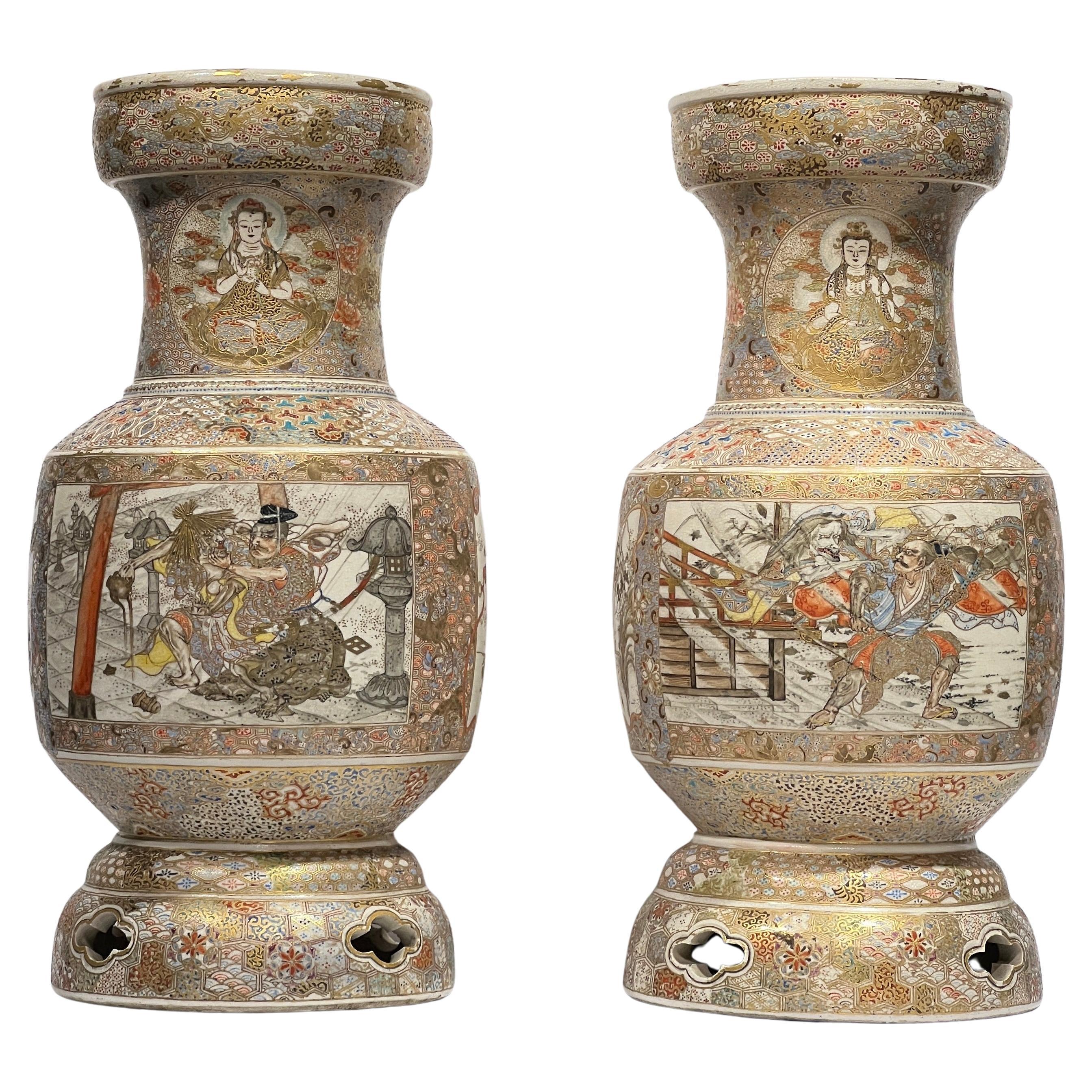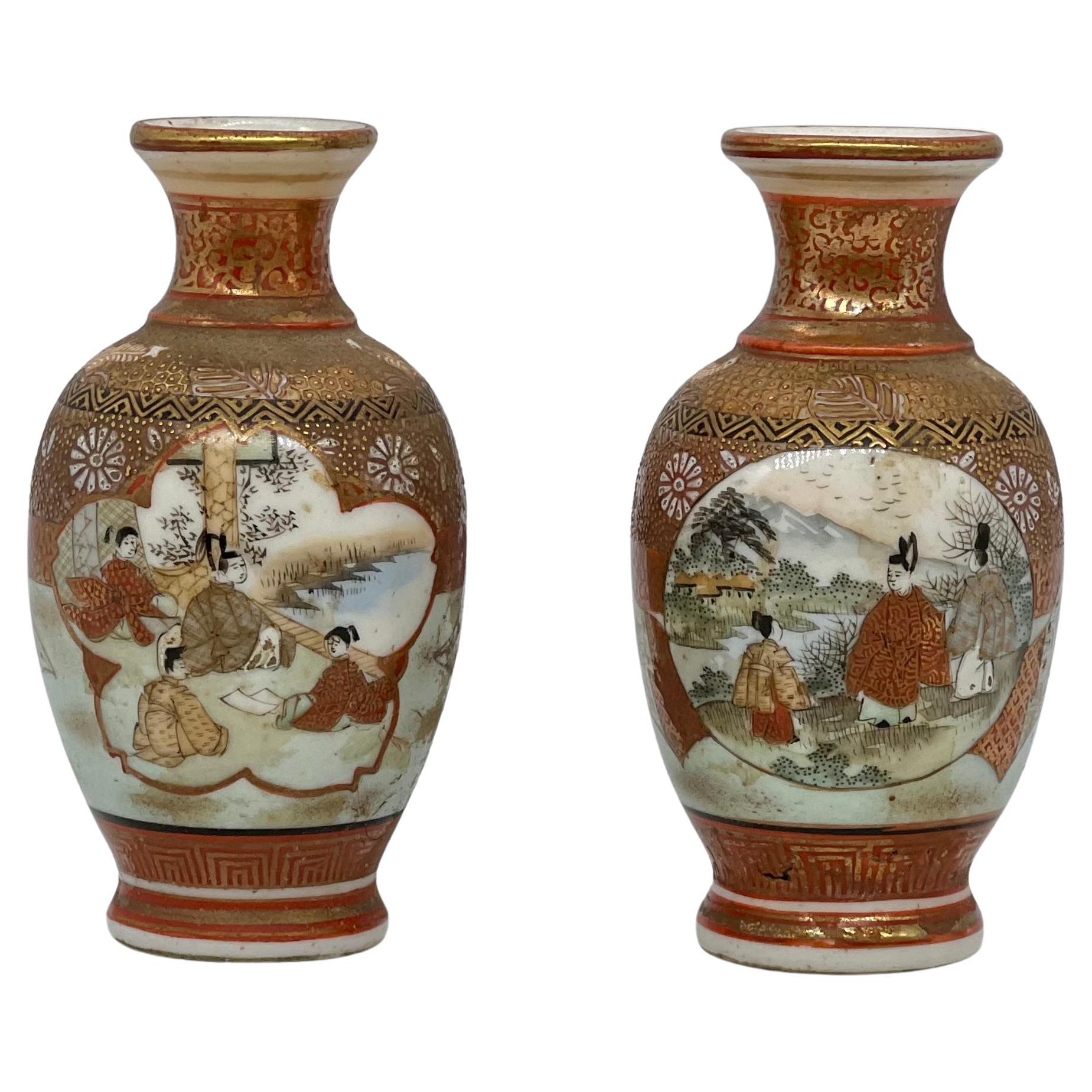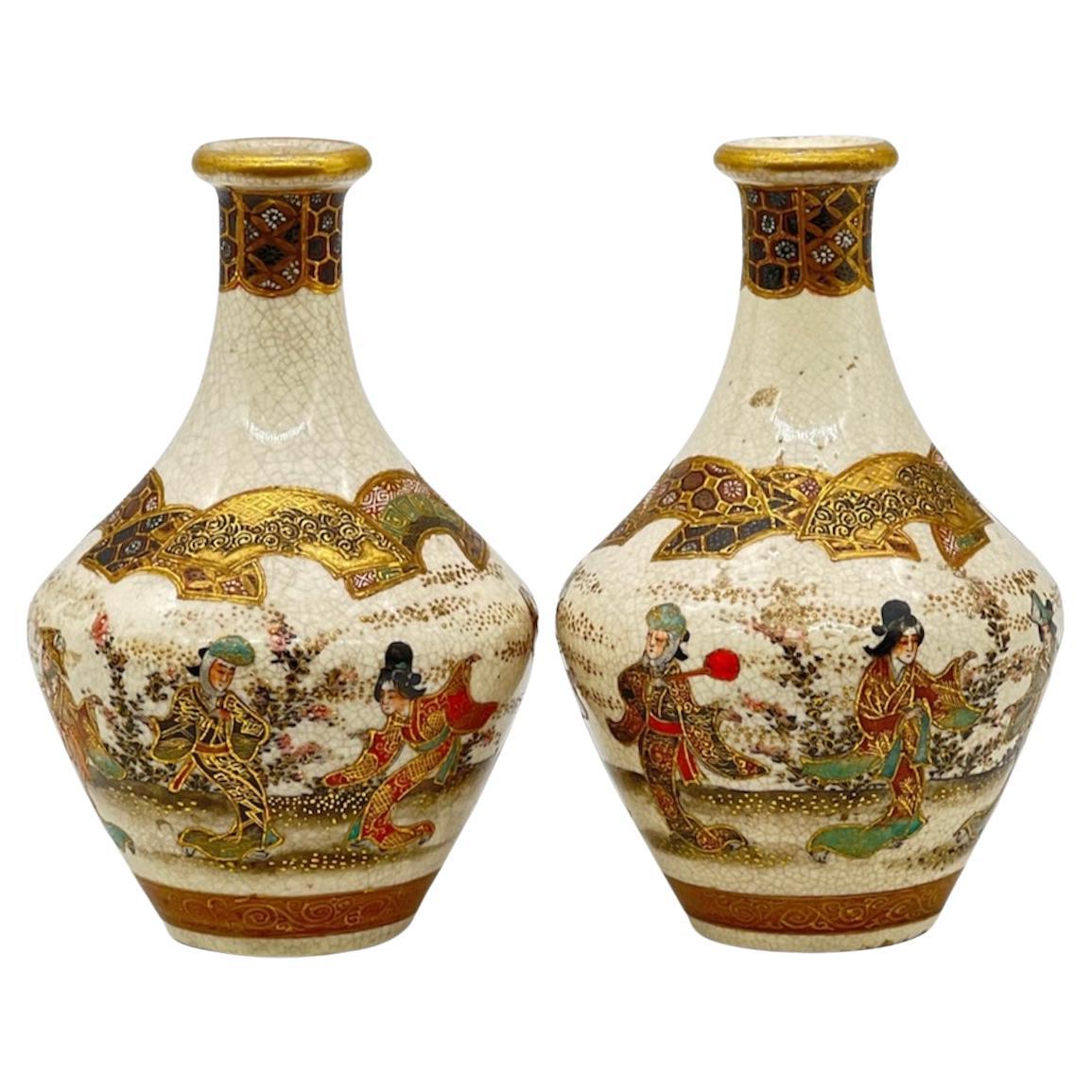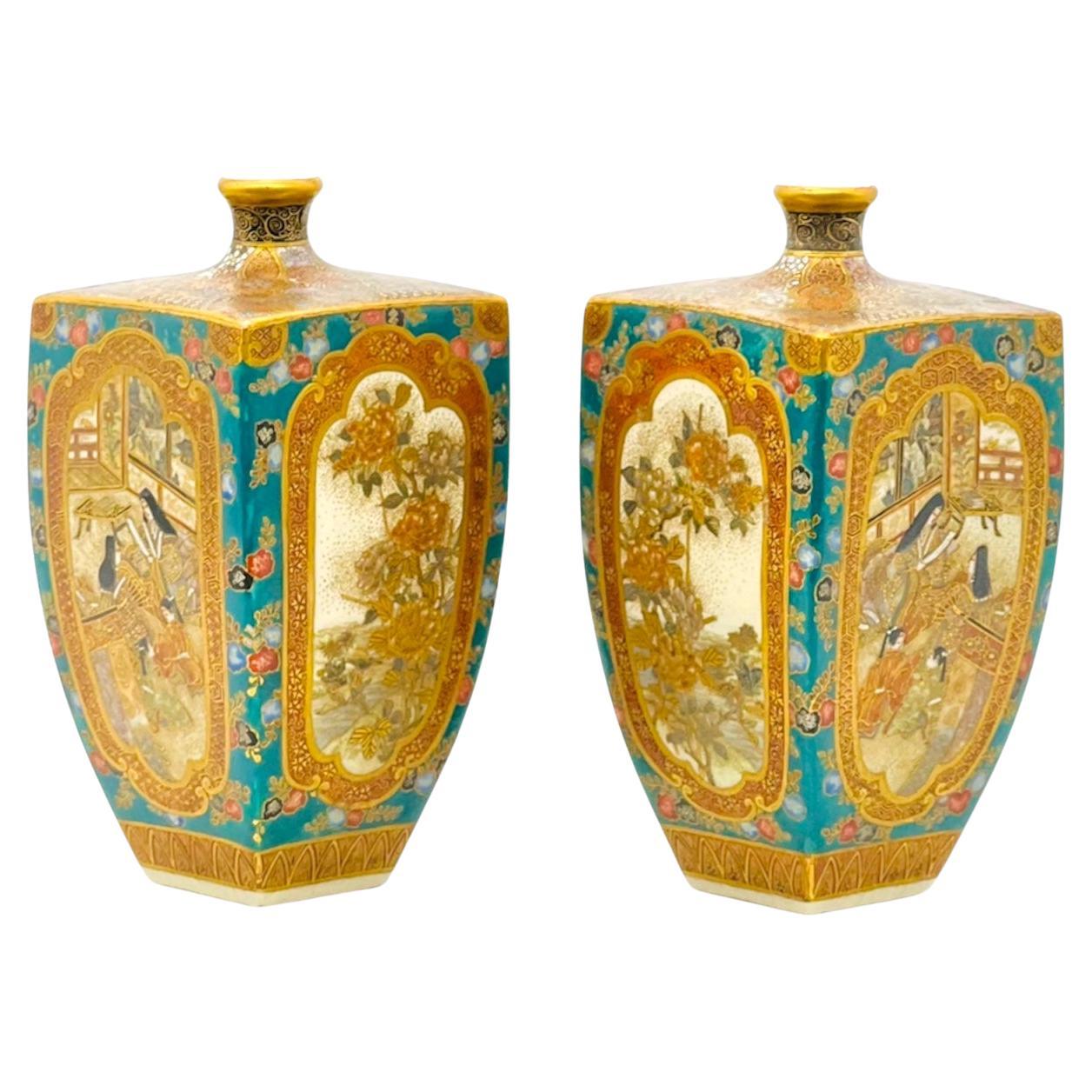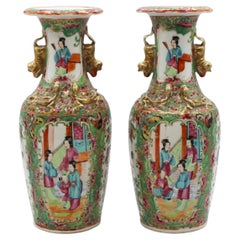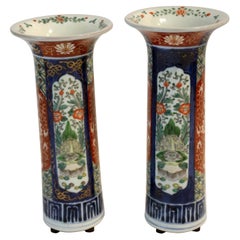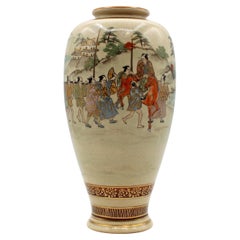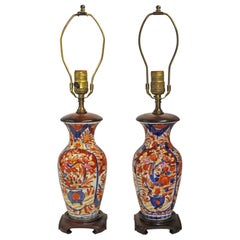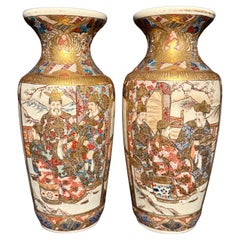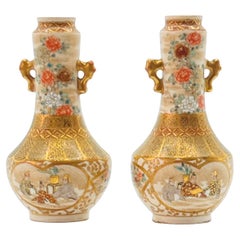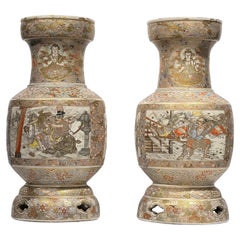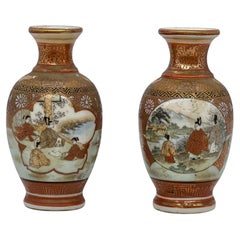Items Similar to 1868-1912 Pair of Japanese Meiji Period Kyoto Satsuma Vases
Want more images or videos?
Request additional images or videos from the seller
1 of 10
1868-1912 Pair of Japanese Meiji Period Kyoto Satsuma Vases
$750per set
£574.78per set
€660.61per set
CA$1,053.41per set
A$1,178.96per set
CHF 617.14per set
MX$14,322.25per set
NOK 7,836.17per set
SEK 7,394.76per set
DKK 4,929.34per set
About the Item
1868-1912 Pair of Meiji Period Kyoto Satsuma Vases, Japan. In the form of tied sash bags/pouches. Four major reserve scenes in gardens. Fine gilding & overglaze painting. Pottery ovoid bodies.
6" x 3.25" x 7 3/8" h.
We are a family business that has been a major source for the selective buyer for over 90 years. We are one the finest antiques shop in the South and Mid-Atlantic, proclaimed the “Best Antiques Shop in the Mid-Atlantic” by Mid-Atlantic Antiques Magazine. With over 7,500 square feet of show room space in an impressive Italianate Villa setting, Whitehall is a must visit spot for antiques collectors, dealers and decorators alike!
We specialize in period 18th and 19th century English and Country French furniture, fine art, silver, porcelain, lighting, and all appropriate decorative accessories. You will also find pieces of American origin, from Continental Europe, Asia, and the Middle East and ranging in date and style from Baroque to Mid-Century Modern. In short, we are a treasure trove of unique items with an unprecedented selection for your home or collection!
- Dimensions:Height: 7.38 in (18.75 cm)Width: 6 in (15.24 cm)Depth: 3.25 in (8.26 cm)
- Sold As:Set of 2
- Style:Meiji (Of the Period)
- Materials and Techniques:
- Place of Origin:
- Period:
- Date of Manufacture:1868-1912
- Condition:Wear consistent with age and use. Condition commensurate with age and use.
- Seller Location:Chapel Hill, NC
- Reference Number:Seller: WCI-8861z1stDibs: LU6458243577492
About the Seller
4.9
Platinum Seller
Premium sellers with a 4.7+ rating and 24-hour response times
Established in 1930
1stDibs seller since 2022
329 sales on 1stDibs
Typical response time: 1 hour
- ShippingRetrieving quote...Shipping from: Chapel Hill, NC
- Return Policy
Authenticity Guarantee
In the unlikely event there’s an issue with an item’s authenticity, contact us within 1 year for a full refund. DetailsMoney-Back Guarantee
If your item is not as described, is damaged in transit, or does not arrive, contact us within 7 days for a full refund. Details24-Hour Cancellation
You have a 24-hour grace period in which to reconsider your purchase, with no questions asked.Vetted Professional Sellers
Our world-class sellers must adhere to strict standards for service and quality, maintaining the integrity of our listings.Price-Match Guarantee
If you find that a seller listed the same item for a lower price elsewhere, we’ll match it.Trusted Global Delivery
Our best-in-class carrier network provides specialized shipping options worldwide, including custom delivery.More From This Seller
View AllPair of Mid-19th Century Chinese Export Porcelain Rose Medallion Vases
By Imari Porcelain
Located in Chapel Hill, NC
Mid-19th century pair of Chinese export porcelain rose medallion vases. Handsome with dragon mounted shoulders & foo lion handles. Fine identical decoration on all sides. Foo lion on...
Category
Antique Mid-19th Century Chinese Chinese Export Ceramics
Materials
Porcelain
Circa 1860 Pair of Imari Vases
Located in Chapel Hill, NC
Circa 1860 pair of Imari vases, Japan. Beaker form; well decorated with trellises behind stylized burnt orange floral cartouches alternating with c...
Category
Antique 1860s Other Vases
Materials
Ceramic
$525 Sale Price
30% Off
C. 1912-1926 Japanese Satsuma Taisho Period Vase by Kyokuzan Workshop
Located in Chapel Hill, NC
1912-1926 Satsuma Taisho period Vase by Kyokuzan workshop, Japan. Delicately painted processiona scene with lake & mountains in the background. Kyokuzan gilt mark on bottom. Burgundy...
Category
Early 20th Century Japanese Taisho Vases
Materials
Porcelain
C. 1860-80 Pair of Japanese Imari Vases Mounted as Lamps
By Imari Porcelain
Located in Chapel Hill, NC
Circa 1860-80 pair of Japanese Imari vases mounted as lamps. Reeded bodies with large floral reserves with urns. Identical bodies decorated by 2 different artisans. Vases: 9.75" h. 4...
Category
Antique Late 19th Century Japanese Table Lamps
Materials
Porcelain, Wood
Late 19th Century Chinese Export Porcelain Vase
Located in Chapel Hill, NC
Late 19th century Chinese export porcelain tall vase. Large scale, late Qing dynasty, famille rose double dragon handled vase. Shoulder dragons & large scenes of scholars. The reserv...
Category
Antique Late 19th Century Chinese Chinese Export Vases
Materials
Porcelain
Meiji Period Porcelain Wine Ewer
Located in Chapel Hill, NC
A Japanese, Meiji period, porcelain wine ewer. Fans set off the figural reserves. This is the finest & earliest of the "new Kutani". Marked Kutani & Happiness.
9 1/2" h., 6" over ha...
Category
Antique Late 19th Century Japanese Meiji Serving Pieces
Materials
Porcelain
$540 Sale Price
55% Off
You May Also Like
Pair Of Japanese Meiji Period Satsuma Vases
Located in Norwood, NJ
Find pair of Meiji period Japanese Satsuma 4 panel vases. Each vase featuring one panel with scholars and one panel with samurai. The two side panels are floral. Wonderfully gilt and...
Category
Early 20th Century Japanese Meiji Vases
Materials
Ceramic
$1,875 / set
A fine pair of Antique Japanese Satsuma vases. Signed Kyuozan.Meiji Era
Located in London, GB
A fine pair of Japanese satsuma vases.
Meiji period.
Signed by Kyokuzan
of globular body rising to a molded cylindrical neck with gilt handles , decorated to the body with pa...
Category
Antique Late 19th Century Japanese Ceramics
Materials
Ceramic, Porcelain
Pair Antique 19th Century Meiji Period Japanese Satsuma Vases
Located in New York, NY
Pair of very fine quality early Meiji period Japanese Satsuma vases, one with its 19th century paper label added by its retailer.
Category
Antique Late 19th Century Japanese Meiji Ceramics
Materials
Ceramic
A Fine Pair of Japanese Kutani Vases. The Best of Kutani, Satsuma.Signed. Meiji
Located in London, GB
A Fine pair of Japanese Kutani Vases. Signed.
Meiji period.
A very nice pair of Japanese Meiji Period (1867-1912) baluster shaped Kutani vases decorated with images of japanese ...
Category
Antique Late 19th Century Japanese Ceramics
Materials
Ceramic, Porcelain
A Fine pair of Japanese Satsuma Vases. Signed Yozan .Meiji Period
Located in London, GB
A Fine Pair of Japanese Satsuma Vases.
Signed to the bottom Yozan.
Meiji Period.
Decorated in satsuma gilt and enamel with a continuous dancing scene of women dancing in tradi...
Category
Antique Late 19th Century Japanese Ceramics
Materials
Ceramic, Porcelain
A Rare and Important Pair of Satsuma Vases by Okamoto Ryozan, Meiji Period
Located in London, GB
A Rare and Important Pair of Satsuma Vases signed Okamoto Ryozan
Meiji period (late 19th century)
Kyoto, circa 1890
Exhibition Standard
Each of tapering square form with a short wai...
Category
Antique 19th Century Japanese Ceramics
Materials
Ceramic, Porcelain
More Ways To Browse
1868 Furniture
Kyoto Furniture
Japanned English Furniture
Satsuma Vases
Antique Satsuma Vase
Japanese Midcentury Modern Pottery
Meiji Porcelain Satsuma
18th Century Japanese Vase
Satsuma Pottery
Japanese Satsuma Pottery
Meiji Pottery Vases
Satsuma Style
Antique American Glaze Pottery
Japanese Meiji Period Silver Vase
18th Century French Pottery
Kyoto Vase
18th Century Japanese Porcelain Vases
Pair Of Satsuma Vases
